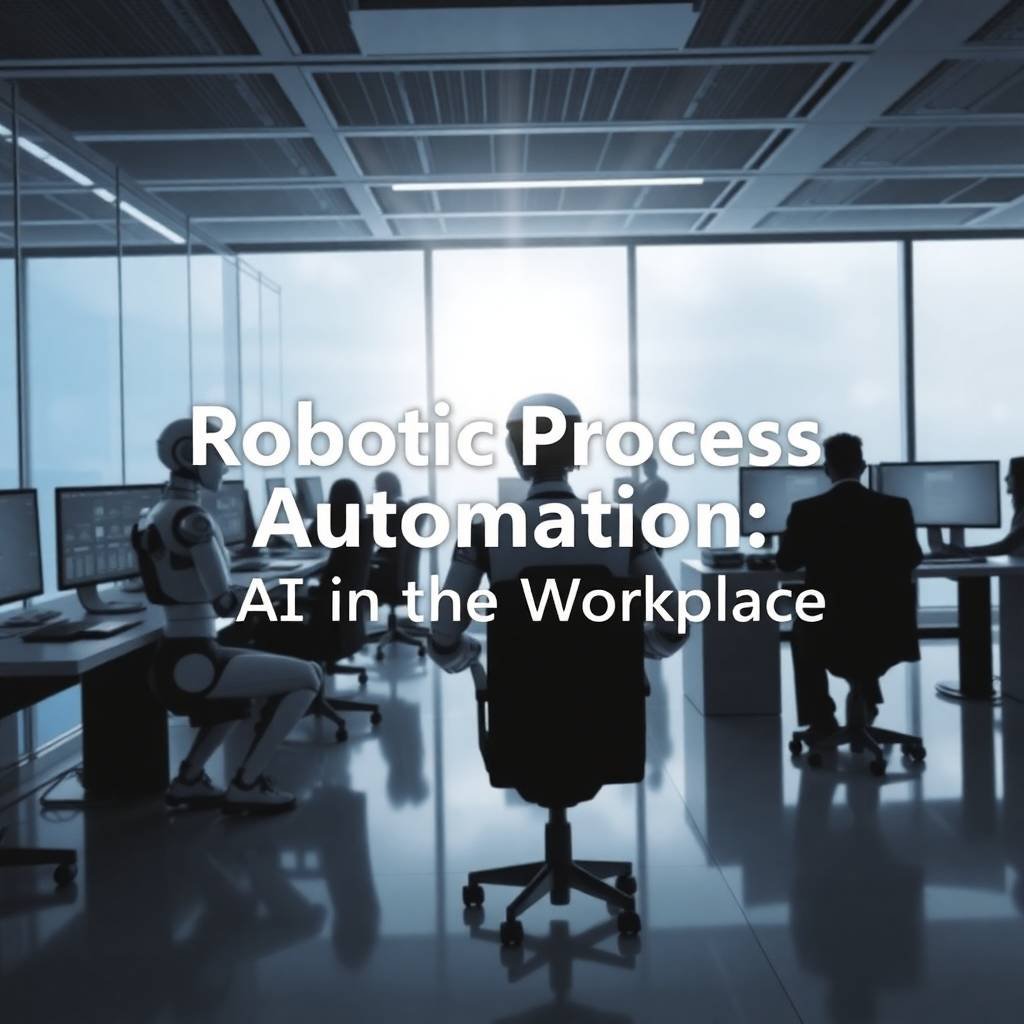In today’s fast-paced business environment, efficiency and innovation are key drivers of success. As organizations strive to stay competitive, many are turning to Robotic Process Automation (RPA) as a solution to enhance operational efficiency and reduce costs. RPA is revolutionizing the way businesses operate by automating repetitive and mundane tasks, allowing human employees to focus on more strategic and creative endeavors.
Benefits of Implementing RPA in the Workplace
Robotic Process Automation offers a multitude of advantages for businesses looking to optimize their operations and improve their bottom line. Here are some of the most significant benefits:
Enhancing Operational Efficiency
RPA significantly streamlines repetitive tasks that consume valuable time and resources. By automating these processes, businesses can ensure faster completion of tasks with consistent accuracy, freeing up employees to focus on more complex and value-added activities.
Reducing Human Error
Manual data entry and repetitive tasks are prone to human error, which can lead to costly mistakes. RPA minimizes these errors by ensuring that tasks are executed with precision and consistency, enhancing the overall quality of work.
Cost-Effectiveness and ROI
Implementing RPA can lead to substantial cost savings by reducing the need for manual labor and decreasing the likelihood of costly errors. Many organizations see a quick return on investment (ROI) as automation drives productivity and enhances profit margins.
Key Industries Embracing RPA
Robotic Process Automation has found its way into numerous industries, each leveraging its capabilities to enhance specific business processes. Here’s a look at how RPA is making a difference in various sectors:
Finance and Accounting
In the finance sector, RPA is used to automate tasks such as financial transactions, invoice processing, and compliance reporting. By reducing the time and effort required for these tasks, financial institutions can enhance accuracy and speed while ensuring compliance with regulations.
Healthcare
Healthcare providers are using RPA to manage patient data more effectively, automate appointment scheduling, and streamline billing processes. This allows healthcare professionals to focus more on patient care and less on administrative tasks, ultimately improving patient outcomes.
Retail
In the retail industry, RPA helps in inventory management, order processing, and customer service. Automating these processes means faster service delivery and improved customer satisfaction, which are crucial in a highly competitive market.
Manufacturing
Manufacturing firms are utilizing RPA to optimize supply chain operations, from procurement to product delivery. Automation in manufacturing leads to reduced production times and increased efficiency, driving higher productivity levels.
Challenges and Considerations in RPA Adoption
While Robotic Process Automation offers significant benefits, there are certain challenges and considerations that businesses must address to ensure successful implementation.
Addressing Job Displacement Concerns
One of the most common concerns with RPA is the potential for job displacement. Organizations can mitigate this by focusing on upskilling their workforce, providing training in new areas that complement automation technologies, and creating new roles that leverage human creativity and strategic thinking.
Technical and Security Challenges
Implementing RPA can present technical challenges, such as integrating with existing legacy systems and ensuring data security. Businesses must invest in robust IT infrastructure and security measures to protect sensitive information and maintain system integrity.
Change Management and Employee Buy-In
Successful RPA adoption requires a cultural shift within the organization. It is essential to engage employees early in the process, communicate the benefits of automation, and involve them in the transition to foster a positive attitude towards technological change.
Future of RPA: Trends and Innovations
As Robotic Process Automation continues to evolve, several exciting trends and innovations are shaping its future:
Intelligent Automation and AI
The integration of AI with RPA is creating smarter, more adaptive automation solutions. By combining machine learning and cognitive technologies, intelligent automation can handle complex tasks that require decision-making and data analysis, leading to more efficient and effective processes.
The Role of RPA in the Remote Work Era
With the rise of remote work, RPA is playing a crucial role in supporting distributed teams. By automating routine tasks, RPA allows remote employees to focus on collaboration and strategic initiatives, enhancing productivity and work-life balance.
Cloud-Based RPA Solutions
The shift towards cloud-based RPA solutions is gaining traction, offering greater scalability and flexibility. Cloud RPA enables businesses to deploy automation quickly and efficiently, reducing upfront costs and allowing for seamless integration with other cloud services.
Hyperautomation
Hyper automation takes RPA to the next level by integrating it with other advanced technologies such as artificial intelligence, machine learning, and process mining. This approach aims to automate as many business processes as possible, driving end-to-end efficiency and innovation.
Conclusion: Embracing the Future of Work with RPA
Robotic Process Automation is not just a trend—it’s a fundamental shift in how businesses operate. As companies embrace RPA, they unlock new levels of efficiency, innovation, and competitive advantage. By automating repetitive tasks, organizations can focus on strategic growth and improving customer experiences.
However, the journey doesn’t end here. The integration of AI and the rise of hyperautomation will further transform the business landscape. To stay ahead, companies must continue to invest in technology, upskill their workforce, and foster a culture of innovation.
As we look to the future, RPA will play a pivotal role in shaping the workplace of tomorrow, making it essential for businesses to embrace this powerful tool and prepare for a future where AI and automation are integral to success.

